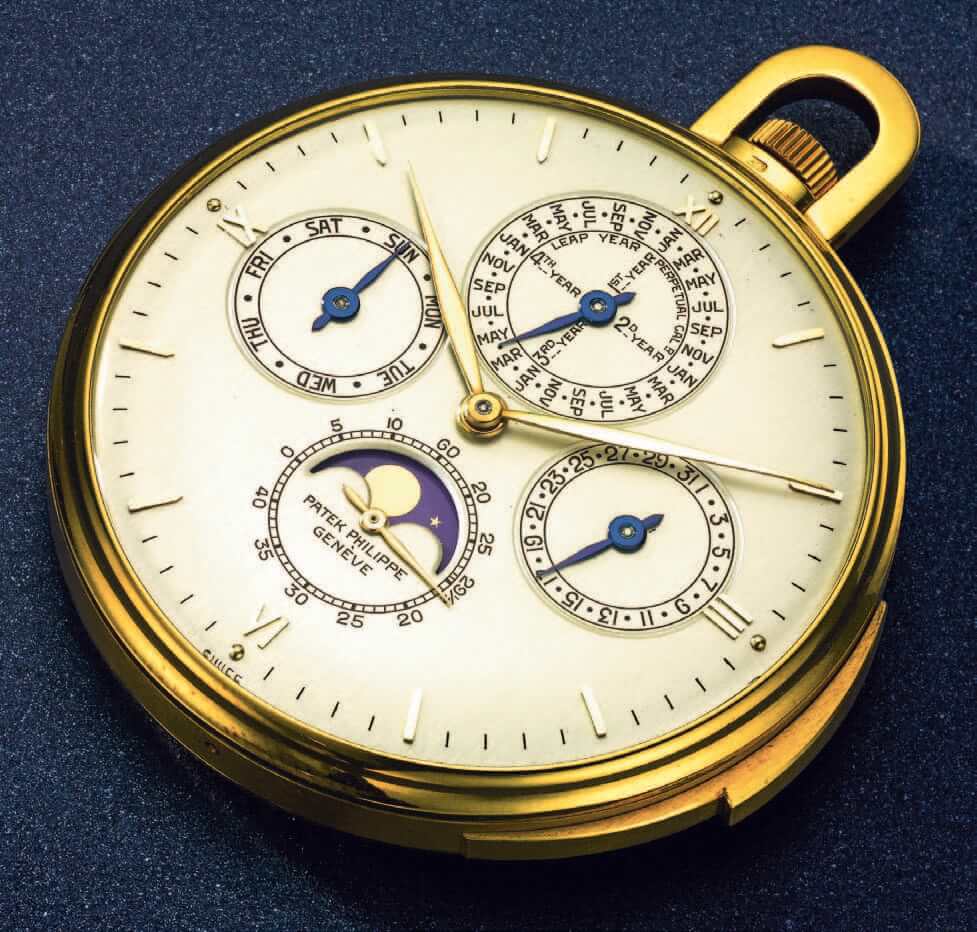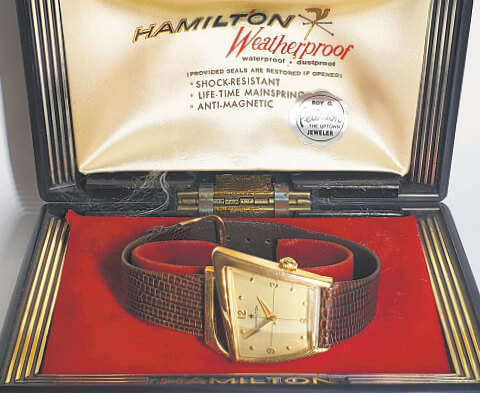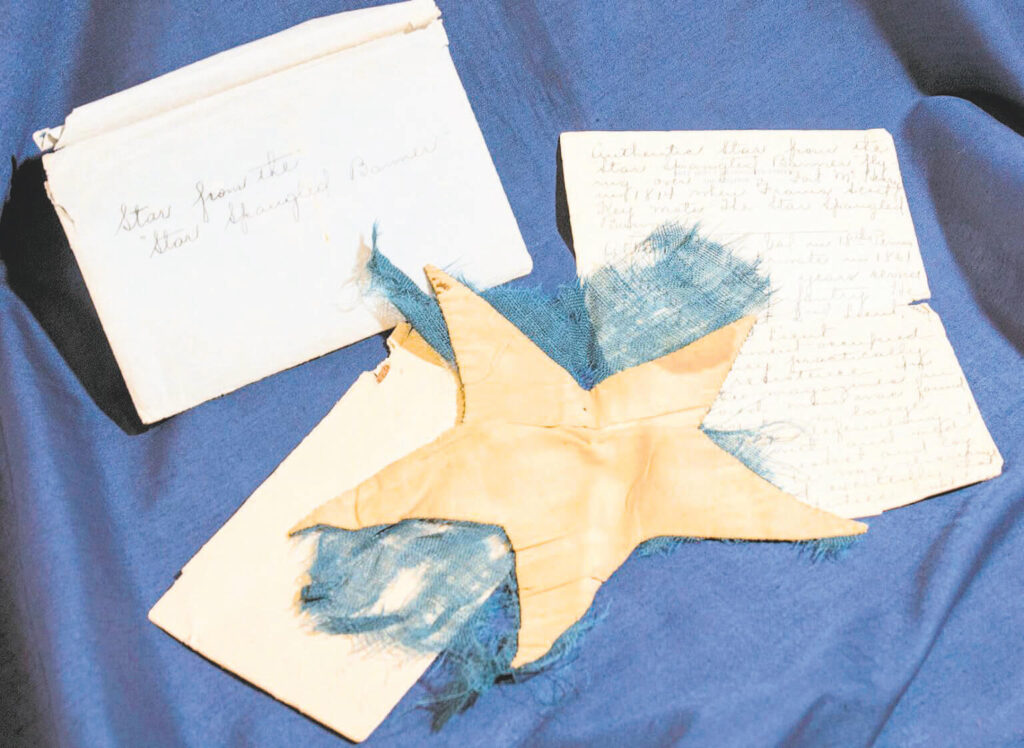One of my house call guys (an employee who has a degree in fine art and goes on home visits) called me at 10:30 pm one night a year or so ago. “Sorry to call so late, but I hit the mother lode; I have to come over.” He arrived with a 5-foottall, unsigned red-and-white painting. He had visited the house of a well-known retired businessman in town, and bought several nice paintings in the $500 to $1,500 range, including this one — unsigned but attributed to Frank Stella. It came with a signed affidavit from the owner as to how he had acquired it: a long, detailed story about his relationship with Frank Stella’s girlfriend in New York City in 1966; how they hung out together, how Frank gave the piece to his girlfriend and how the girlfriend, upset over their breakup, gave it to him. It was a well-executed letter, very specific as to times and dates.
I researched this, and found the piece was exactly the sort of work Stella was doing in the 1960s. I found several of that size and style, many unsigned, that went for over $1 million at auction — but none in the past five years. Why would the owner sell it so cheaply, we wondered. I sent pics to Sotheby’s along with the signed letterhead indicting the businessman’s provenance. Sotheby’s usually plays it cool, but they were very excited and asked that we get it there quickly, as they had a sale within 90 days. We trucked it up to New York City the next day, arriving late at night, and asked a friend and fellow art dealer to secretly store it in his garage until the next morning, when Sotheby’s would pick it up.
Sotheby’s Estimate Had A Wow Factor
Sotheby’s called us the next day, after a thorough inspection, and said it was an extraordinary piece: same paint (Stella used a specific kind of commercial house paint), same Pantone, same canvas. They were wowed: auction estimate $2-$3 million! (They confided to us that the estimate was very conservative.) We swept into action. For the following week, we had meetings with accountants and attorneys and arrived at a plan to give the seller more money … a sliding scale, from $500,000 to $1 million, depending on how well it did. (For those of you who think it’s okay to make this much profit in spite of both parties agreeing to a price, it’s not.)

$15,000 / 1960s THE CAUSE OF ALL THE HOOPLA
We drew up the papers and I rehearsed how I would approach him so as to recompense him without blowing the deal. Meanwhile, Katrina warned me not to count our chickens before they hatched. But secretly, dreams of a second home on the Riviera and maybe a private jet kept creeping into my head. Sotheby’s called and said they had more good news: They’d gotten hold of Frank Stella (he was still living and active in New York City) and he was coming to view it the next day! We left off last Sunday with Frank Stella contacted, and our planning to visit Sotheby’s to authenticate his painting the next day. Sotheby’s called me after the meeting: “Frank says it is not his.”
They explained that an artist can disavow a work if he is not happy with it, and it will be deemed “not his” even if he did create it. (Our seller had mentioned that Stella gave it to his girlfriend partly because he was unhappy with it.) Deflated, we called a lesser auction house and, armed with the seller’s letter of provenance, were told they would offer it as “Attributed to Stella” with a much lower auction estimate of $750,000 to $1 million. A couple of days later, the FBI called. “Hello, Mr. Hess. Frank Stella’s office called us. I am the special agent in charge of the art fraud department of the FBI in Manhattan, and I need to talk to you about the fake Stella.” I gave him the whole story about the seller and sent him a copy of the letter of provenance from him.
Authenticity In Question
He told me that the piece was fake. We reached out to our seller, saying we needed more info, as we were going to offer this at the lesser auction, and with more detailed info we might be able to get $750,000 or more; and there would be a couple of hundred thousand dollars for him. And by the way, would you mind speaking to the FBI so they will get off our back and we can sell this thing? The seller broke down and cried: said he painted it … studiously using the same canvas maker, buying the same brand of paint, making a frame in the same manner and making it the exact same size. It was a fake! I called the agent, told him the story, and gave him our seller’s contact information. A couple of days later, the agent called me, laughing, and said, essentially no harm, no foul. The work was not signed.
I was clearly hoodwinked. He had investigated this and no charges would be filed. And, by the way, he said, he had viewed the painting and it was truly powerful. Would I donate it so he could use it in talks about art fraud and how good people and even Sotheby’s could be fooled? I said, well, I am out over $15,000 here, but, yes, I would be proud to take the tax write-off for a donation to the FBI and the United States of America to further art fraud awareness. He said, “No, I want you to donate it to me. I will hang it in my home. But I will use it in my talks and such.” “Um, no,” I said. Result?
I was out well over $15,000. I had egg on my face, my house call guy was devastated, an FBI agent was mad at me, I’d inconvenienced my art dealer friend late at night to store the painting, Sotheby’s was now wary of anything I sent them (I use Christie’s more these days), and I didn’t have a danged vacation home in the south of France or a jet, either. And the painting was still housed up at Sotheby’s and would cost me another grand or two just to get it back down here.
True story. It now resides in a dark corner of our warehouse.
This is an archival article formerly written and is for informational purposes only. The valuations in this article have likely changed since it was first written.




